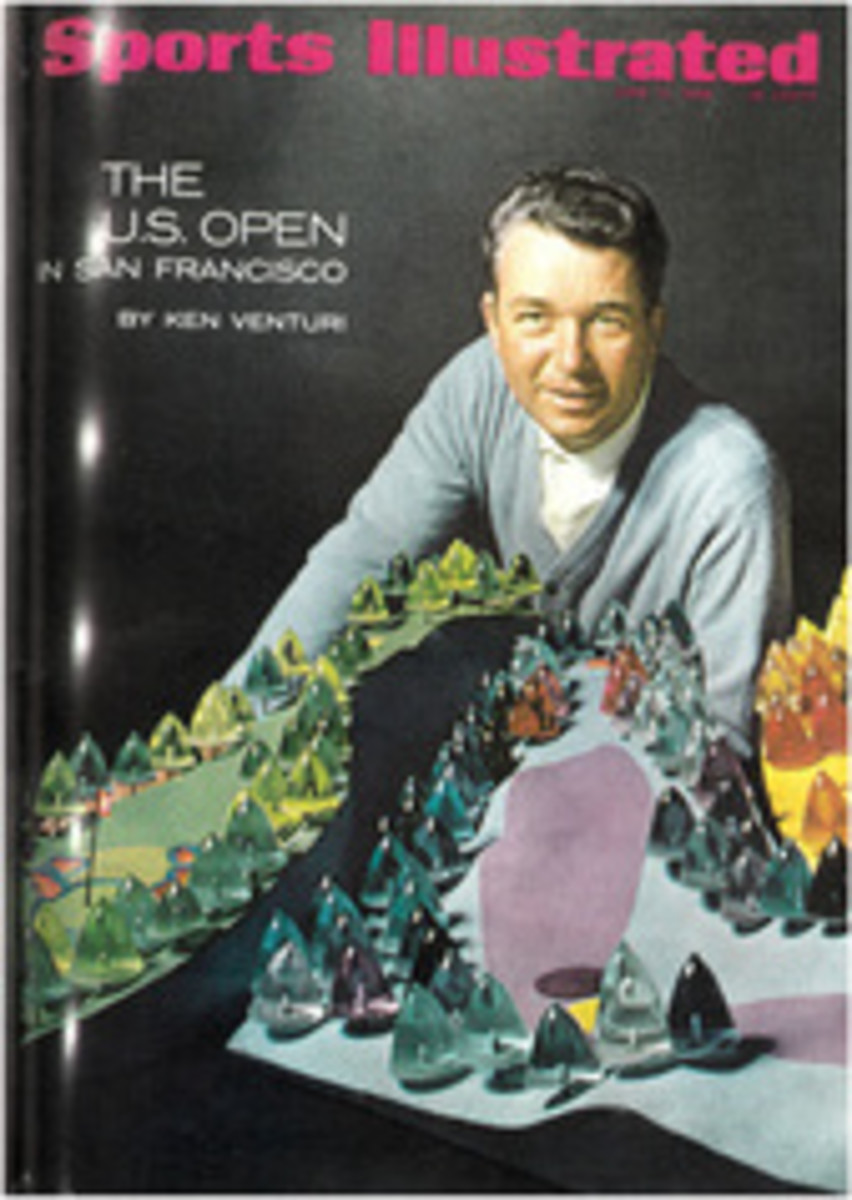
Big Betting on Bullfights in the Boondocks
Nothing stirs up the sporting blood of villagers in the Philippine back-country so much as a lively water-buffalo fight. In the Visayan Islands, for example, which lie between Luzon and Mindanao, even those who regard cockfights as interesting only to poultry butchers will bet their last peso on the carabao they happen to fancy—and when word gets around that a fight is scheduled, punters from surrounding villages crowd in to put their money down. The total betting often runs as high as 1,000 pesos (roughly $250). The bookmaker, in a curious variation from custom elsewhere, is democratically chosen: the bettors pick the neighbor least likely to run off with the money.
Some people, of course, don't bet—they simply like to watch water buffalo mix it up, especially at the time of the full moon, when the beasts are believed to be touched with madness and ready for anything. The rules of the sport, an ancient Malayan one, have been traditional over the centuries and are quite simple: 1) no owner may touch, push or in any way try to help his own entry; 2) an animal is considered defeated only when it can no longer stand up or when it runs away and refuses to come back; 3) the decision of the referee is final. (The referee is usually the barrio captain or village chief.)
The fights are usually staged in the cool of morning or during the early part of a moonlit evening. The promoters try to pick a spot where the buffalo are likely to put on a good show. If the place is too far from their usual haunts they get homesick and will refuse to fight. Some carabao will not fight if they have an unfamiliar handler; they like to have the owner in their corner. Others would rather ruminate unless there is a female water buffalo somewhere nearby.
Once the battle has started, anything goes. There are no fouls, time-outs or substitutions. Such limitations would be almost impossible to enforce, since water buffalo, though good fighters, are poor sports and, once aroused, they tolerate no outside influences. At starting time the two large beasts are brought to within about a hundred feet of each other, where they work up hate and anger, glaring with lifted heads, the big ears upright, the fiery eyes rolling angrily in their sockets. They sniff the air like dogs scenting game. They shake their huge horns fiercely, stomp their feet and in general ham it up like professional wrestlers. They even groan. All this time the contestants are tethered. But then each handler frees his beast, slipping the ropes off the twitching head, and slaps the animal's buttocks by way of telling him to get in there and show them.
The carabao utters a long, high-pitched moan, puts on its most menacing grimace, lowers its head, points its horns like double daggers and charges at a half run. So, of course, does the other carabao. When the two meet the clash reverberates through the jungle.
The animals push, weave, duck and bob like swordsmen in an old Douglas Fairbanks movie. Their hooves dig deep into the ground while they maneuver for the best fighting stance. Bits of grass, twigs and a rain of mud fly in all directions. The breathing of the fighters is more and more stentorious, angrier and angrier, as they circle and stalk each other for advantage. One misstep, one slip of the foot in the mud, and the buffalo left standing is the almost certain winner. He can pierce his fallen enemy's sides or thrust his horns into his eyes.
Presently—if it is any kind of fight at all—the first blood is drawn. One beast or the other is wounded. The crowd conforms to crowd behavior in or out of jungles: it goes wild. The wounded carabao begins to show fear. It is losing blood and with it courage. The other animal presses hard. The loser painfully backpedals, then turns tail and runs in wild retreat. The winner is close after, sometimes close enough to stab with its horns, so that the thick buttocks and hind legs of the fleeing animal are crisscrossed with wounds. The spectators with money on the beast plead with him to stand and fight. And sometimes, incredibly, he does. He faces around and waits for a new charge-sometimes he even charges himself—and at this point it might be a fight to the death.
The gallery, meanwhile, is a spectacle in its own right. A running fight is hard to keep up with and a bettor needs to be spry to see how his bull is doing. At a fight in one village, a young woman who didn't want to miss anything fell into a mudhole trying to keep up with the buffalo who was copping out. Men run out of barbershops with lather on their faces and hair half cut to catch the final rounds, and when the water buffalo charge past a schoolyard the children—with the teacher often in the vanguard—leave their books behind and join the pursuit. In the later stages of a fight it is better for a carabao aficionado to be mobile. Those on the ground have the advantage over spectators who climb high into coconut trees to get the best seats for the opening clash.
Though still popular, carabao fights seem to be on the way out, a development that owes little to humanitarianism. The politicians are moving in to stop them. In many backcountry political campaigns a candidate who wants to draw the crowd away from an opponent's rally gets a friend to promote a water-buffalo match. Since most constituents would rather see a buffalo fight than listen to a speech, this has been declared an unfair tactic. Another, lesser reason for the declining popularity of the contests is that the carabao is a protected animal; as a conservation measure, the Philippine government has banned its slaughter. In place of water-buffalo fights, the government is encouraging villagers to buy transistor radios, figuring this will take people's minds off the rowdier kinds of entertainment. If radio fails, next stop Batman. Something has to save the poor carabao.

